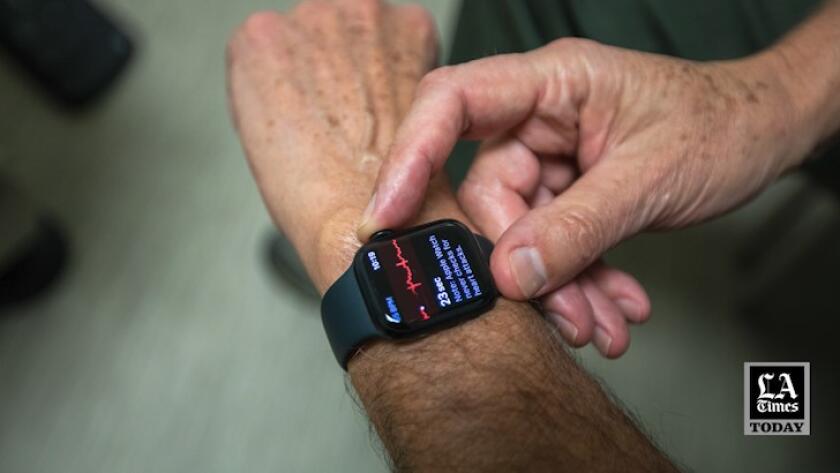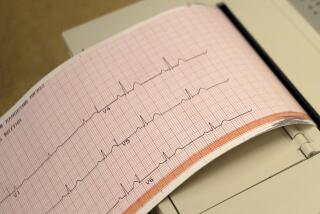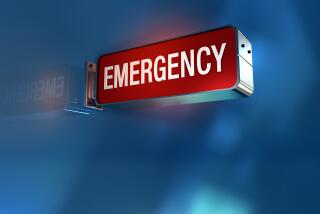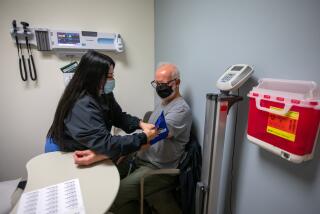Column: At a checkup with my cardiologist, I got a crash course on how to stay alive
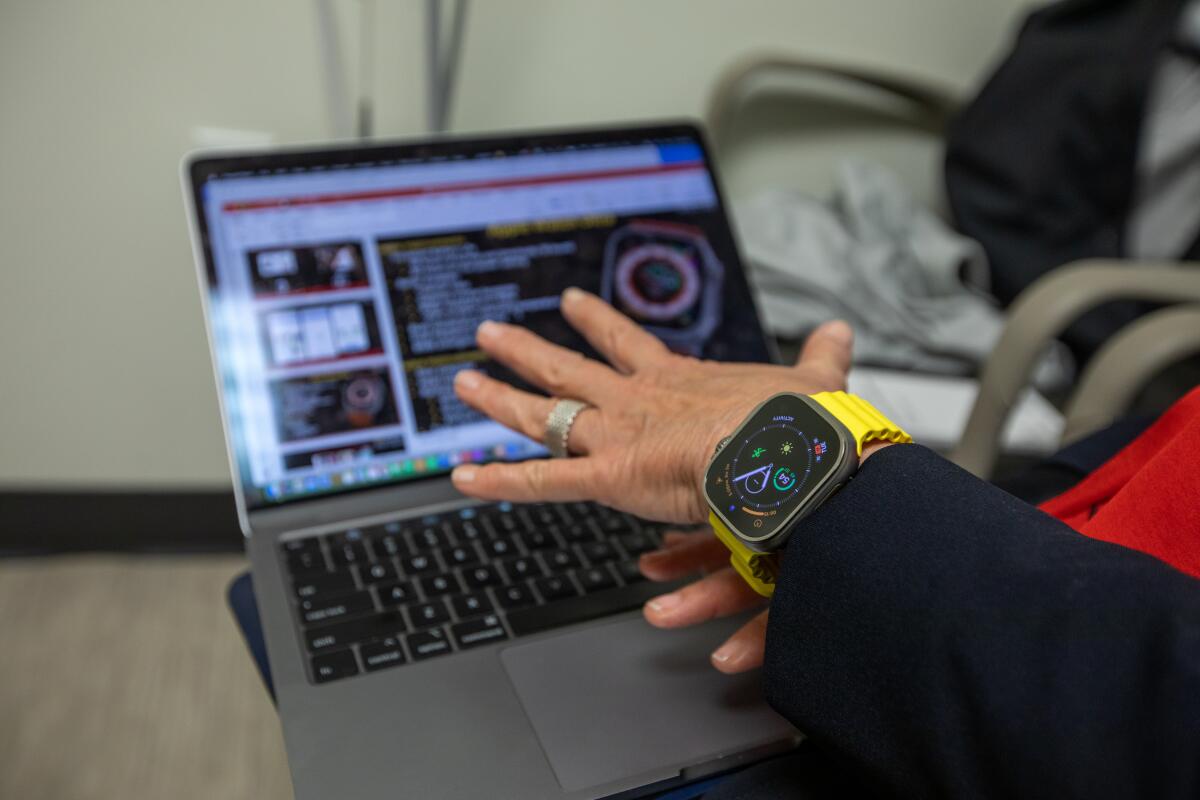
It was the middle of the night when my racing heart woke me up. I took deep breaths and tried to relax.
Abnormal heart rhythms are nothing new for me, so I didn’t panic when this happened late last year. But extended irregular beats do get my attention, because about 10 years ago, I went into cardiac arrest after knee surgery and had to be resuscitated by a nurse.
Eventually, I fell back asleep, and in the morning I activated a device that reads my pacemaker and sends data to my cardiologist. She quickly made a diagnosis, changed my meds and the racing went away.
In addition to the device that reads my pacemaker, I have a wristwatch that can take an electrocardiogram in 30 seconds and upload it to my smartphone, so I can send the result to my doctor.
California is about to be hit by an aging population wave, and Steve Lopez is riding it. His column focuses on the blessings and burdens of advancing age — and how some folks are challenging the stigma associated with older adults.
These and other devices designed to monitor various health problems are already widely in use or in development. So much so that a just-published story by Kaiser Health News asked the question: “Will your smartphone be the next doctor’s office?”
The short answer is no. Net yet anyway, with lots of unanswered questions about accuracy, privacy, cybersecurity, Food and Drug Administration approval, insurance coverage, commercialization of good health, and fair access to costly devices. And technology can be glitchy and a headache, sometimes driving up rather than lowering my blood pressure.
But along with the challenges and risks, there’s big potential in technology that gives patients a greater role in monitoring their own health and gives doctors another tool to better manage patients.
As it happens, I had a regular checkup with my cardiologist, Dr. Leslie A. Saxon, on Tuesday, and she agreed in advance to give me refresher courses on the benefits and challenges of medical technology, and on what people should know about the causes and treatment of cardiac arrest. The recent collapse of Buffalo Bills player Damar Hamlin and the death of Lisa Marie Presley both involved cardiac arrest.
Saxon’s aide placed a wand-like sensor over my pacemaker and studied the readout of what my heart has been up to over the last few months. Every little hiccup is recorded, helping Saxon determine the frequency, type and duration of irregular rhythms. Saxon had me draw deep breaths as she listened in with a stethoscope, and while she studied my heart, I picked her brain.
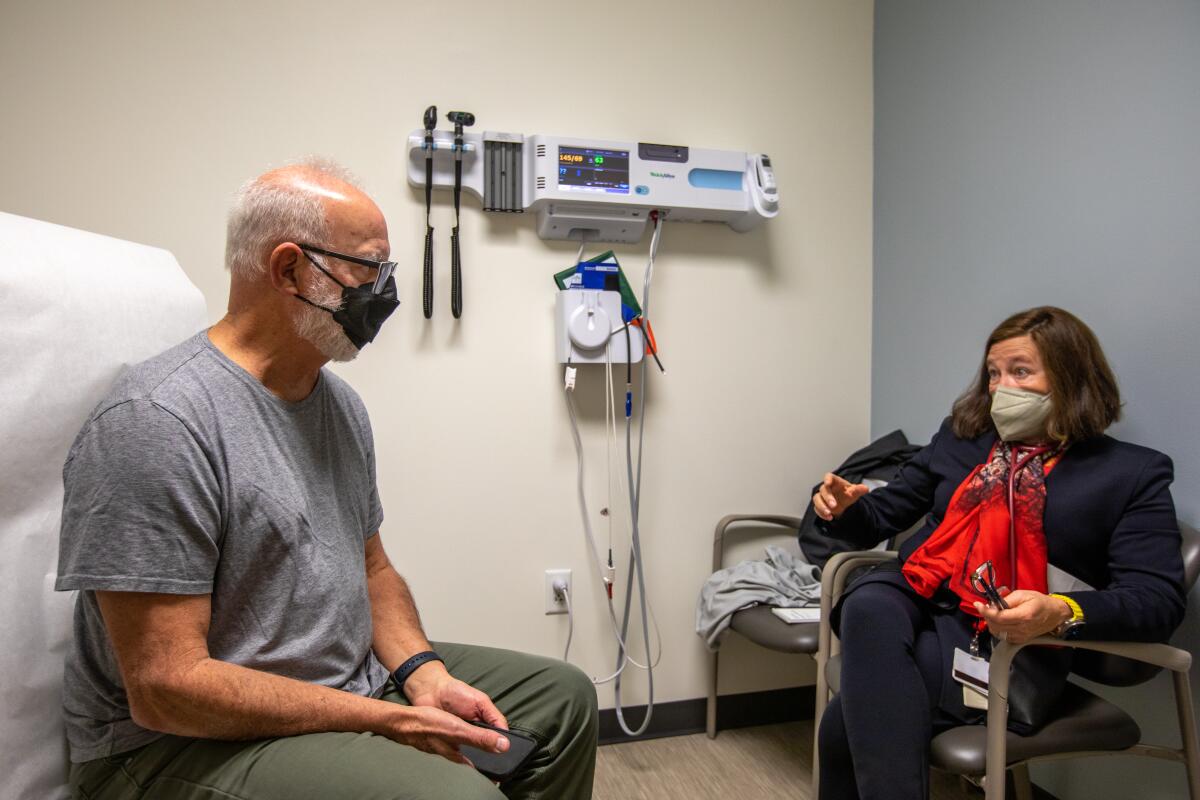
Saxon, who doctors at Keck Medicine of USC, is a professor, clinical scholar and executive director of the USC Center for Body Computing, whose mission is to develop ways by which technology can “make healthcare more personal, affordable and accessible for all.” In other words, she was the perfect person to answer my questions.
Saxon told me that about a year and a half ago, she was on a flight to Los Angeles that had just left North Carolina when a woman near her collapsed.
“She’s not conscious, but I can feel a weak pulse,” Saxon said, recalling the emergency.
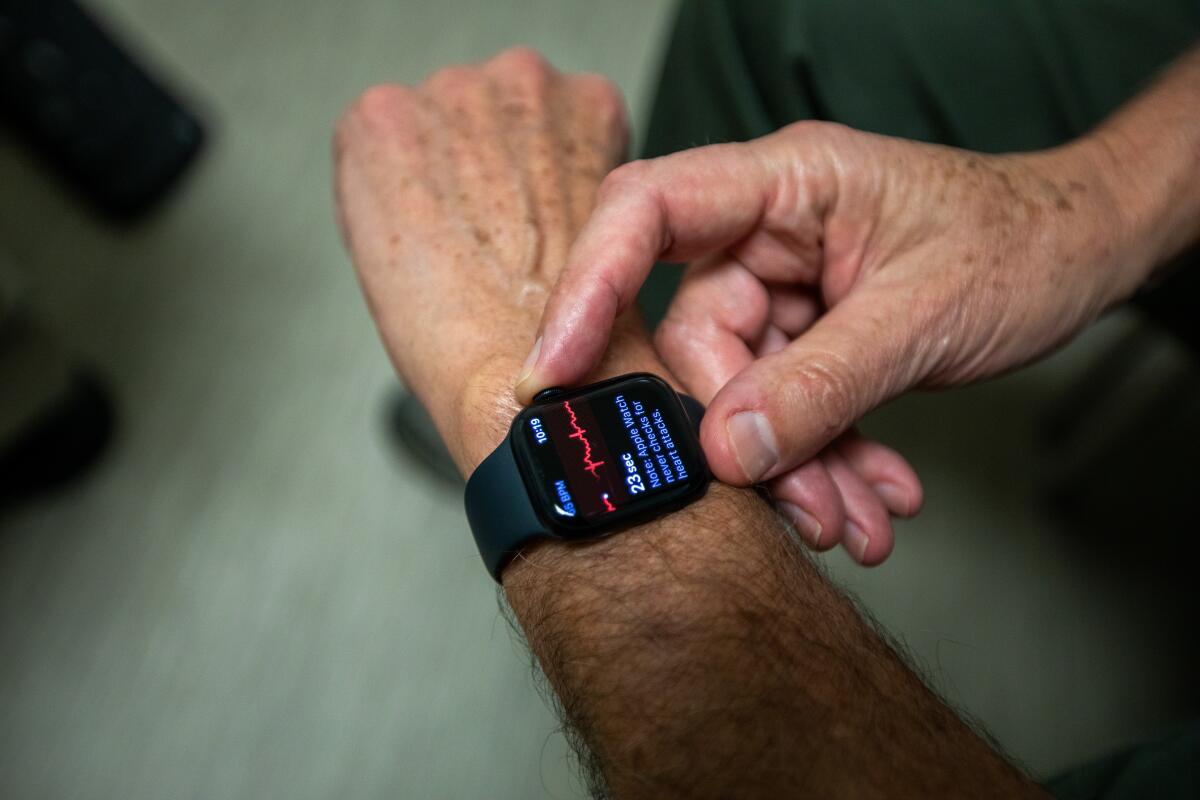
The doctor removed her Apple Watch, put it on the unconscious woman’s wrist, and placed the woman’s finger on the little nub that detects heart function. (It’s the process I use when I have an arrhythmia.) The reading from Saxon’s watch went to her phone, and she knew exactly what was happening.
“I see that she’s in this rhythm called atrial fibrillation,” said Saxon, who asked a flight attendant for a saline solution from the plane’s medical supply kit. Saxon started an IV and the woman, a diabetic, soon recovered. “I just stayed with her, and she’s fine, and we take her to California and we didn’t have to turn the plane around.”
Of course, collapsing next to a cardiologist is not something you can plan in advance. But Saxon’s story illustrates the value of having the ability to run an EKG if you’re not feeling right. You do, however, have to then hope your doctor or an assistant quickly sees the reading.
There’s also the bigger societal question of what to do for those who can’t afford expensive electronic gadgets or don’t have access to quality healthcare.
There are no easy short-term answers when it comes to the decades-long shortcomings of the healthcare system. But Saxon believes it’s possible to shake up “traditional medicine” and make greater use of available technology for everyone’s benefit, while simultaneously tackling issues of data privacy and commercial profiteering.
“If we’re going to get the outcomes that we really want, we need to get to disease earlier and engage patients in their own care and understanding, so we’re going to have to do un-traditional things,” she said, pointing to her watch, which cost about $1,000. (Mine cost less than half that amount.)
“We’re going to have to realize,” Saxon said, “that buying a $1,000 watch and an iPhone with a data plan is cheaper than one ER visit.”
Excellent point, but neither logic nor improved health outcomes drive healthcare policymaking.
Saxon, a swimmer who’s in good health, gave another example of how people can use technology to manage their own health. She’s not diabetic, but she has worn a continuous glucose monitor patch to study her body’s response to specific foods.
When eating bagels and cream cheese, for example, her glucose spiked to levels that surprised her.
“That increases my risk by 5% to 10% of getting diabetes,” she said. “I’ve always loved that kind of food, right? But when I saw what it was doing to me, I kind of don’t crave it anymore.”
Saxon became my cardiologist after my brief visit to the other side in 2012 immediately following knee replacement surgery. I was quickly resuscitated in post-op, and Saxon said my cardiac arrest was probably caused by a confluence of factors related to pain, anesthesia and my long-standing heart rhythm issues.
In lay terms, cardiac arrest is an electrical problem and a heart attack is a plumbing problem, but the two are often connected.
“As you get older, your risk of cardiovascular death increases, and the majority of cardiac arrests are due to a heart attack,” Saxon said. “So one thing you can do as you get older is get screened for your risk of heart disease, hypertension, high cholesterol — and get a stress test if indicated. ... You’ll take care of a lot of risk, and you can push out your bad event for years and years.”
And then, Saxon said, there’s the obvious. Exercise, maintain a healthy diet, limit alcohol, don’t smoke, watch your weight.
Get the latest in the Steve Lopez series "Golden State."
Join columnist Steve Lopez as he explores the challenges - and occasional thrills - of aging in California.
You may occasionally receive promotional content from the Los Angeles Times.
Cardiac arrest can strike at any age, and if you’re with someone who goes down, what should you do?
Well, we’re not doctors, so we can’t diagnose the cause of the collapse. But we can make sure someone calls 911, then make sure the person’s airways are cleared and begin chest compressions. If the problem is cardiac arrest, the CPR can push blood through the body and keep the person alive until professional help and defibrillators arrive.
According to the American Heart Assn., cardiac arrest was a factor in more than 370,000 deaths in the U.S. in 2019, but Saxon said doing the right thing in the first few minutes can save a life. And anybody can learn the basics of CPR. You can check out redcross.org, and the heart association also has a ton of good information at cpr.heart.org.
As for my checkup, Saxon ordered up a stress test for me, just to stay on top of things. But in general, she said, I’m relatively healthy, so this does not figure to be my last Golden State column.
steve.lopez@latimes.com
Watch L.A. Times Today at 7 p.m. on Spectrum News 1 on Channel 1 or live stream on the Spectrum News App. Palos Verdes Peninsula and Orange County viewers can watch on Cox Systems on channel 99.
More to Read
Sign up for Essential California
The most important California stories and recommendations in your inbox every morning.
You may occasionally receive promotional content from the Los Angeles Times.

